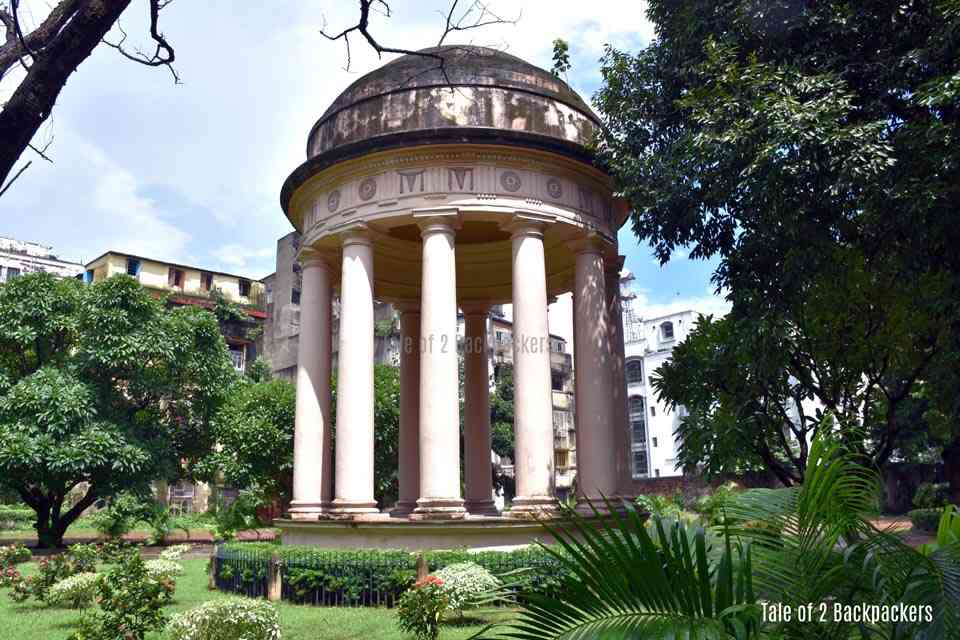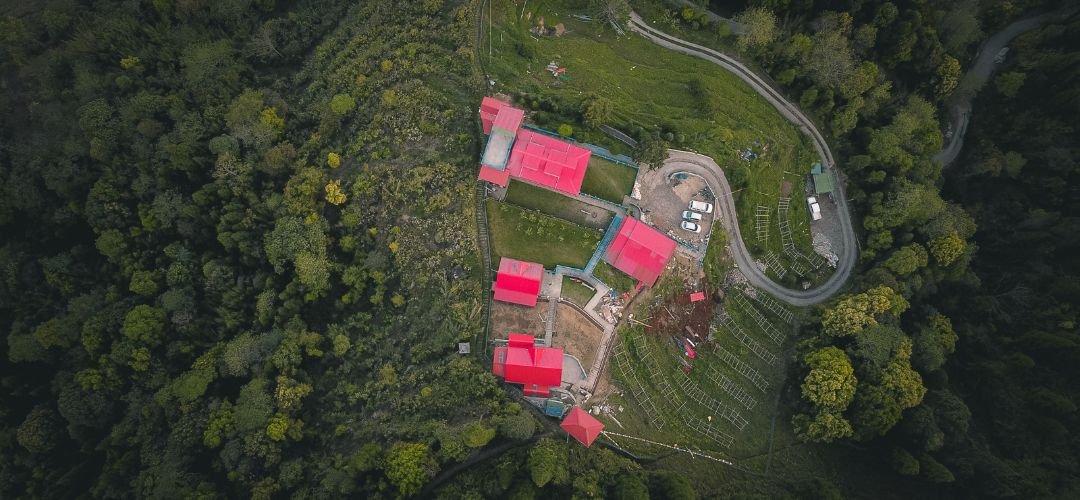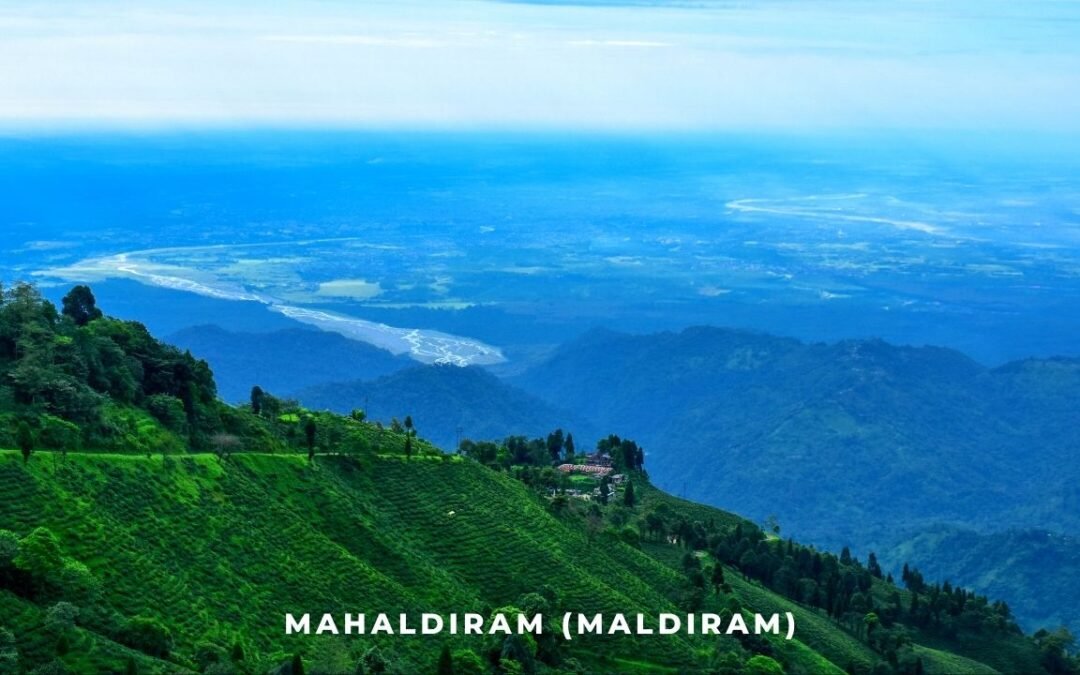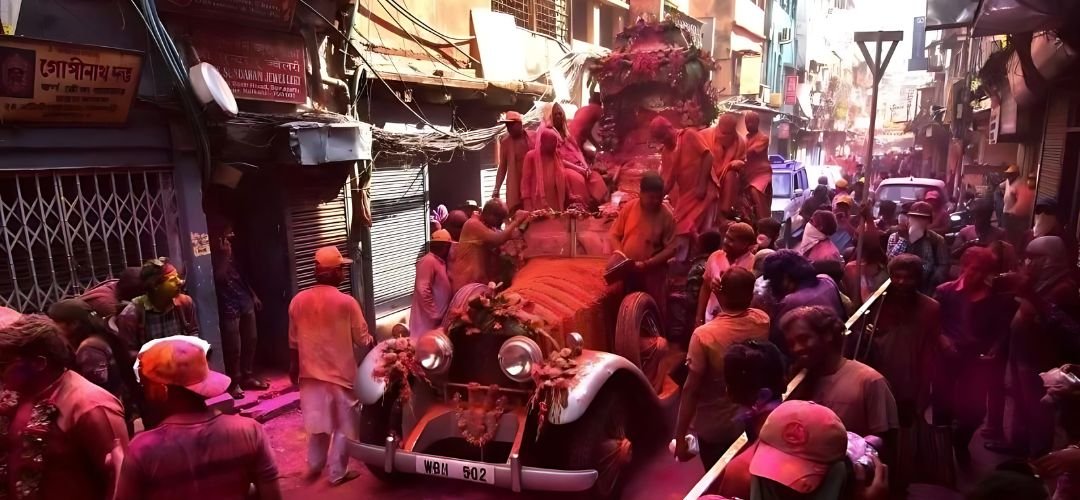Just as you move around the north-western corner of Raj Bhavan, the Governor’s house, you come across a Neo-classical structure – the St John’s Church Kolkata. The church stands tall as a witness to all the bygone eras of Kolkata. St. John’s Church Kolkata is the third oldest church in Calcutta only after the Armenian Church and the Old Mission Church. You might as well pass by the structure every now and then and might have dismissed it off as just another church. But the place is a treasure house of historical facts.
The land on which the St. John’s Cathedral was built was actually a burial ground known as the old burial ground. In fact, the tomb of Job Charnock lies here. The land was the property of Maharaja Naba Krishna Bahadur of Sovabazar Rajbari. He had donated the land to Warren Hastings, the Governor-General of Calcutta. All the graves were dug up and the remains removed barring that of Job Charnock and Admiral Watson. The foundation stone of the church was laid on April 6, 1784, by Warren Hastings. This was one of the first few constructions commissioned by the East India Company in Calcutta and the construction was completed with Rs.30,000.00 raised by public lottery. Military engineer James Agg was the architect behind this colossal structure. He had modelled the church on the lines on St. Martin’s-in-the-field, London. The construction was completed in 1787 and St John’s Church served as the Anglican Cathedral of Calcutta till 1847 when it was transferred to St. Paul’s Cathedral.

The church was built by a combination of bricks and stones. Stones were quite a rare construction material during those times. The use of stone gave the church its native name “Pathure Girja”. The church was built on the neo-classical architectural style. The impressive spire is 174 ft high. The verandah was added in 1811. The structure rests on tall columns. The interior of the church is quite ancient but well maintained. Stained glasses, marble works, woodcarvings and beautiful paintings add beauty to the interiors. The Church was consecrated on the 24th of June, 1787, the date being that of the Nativity of St. John the Baptist. The church was used for baptisms and weddings of the nobles of British Bengal of that time. In 1798, merchant and Calcutta Sheriff William Fairlie, after whom Fairlie Place got its name, married Miss Margaret Ogilvie here.

Inside the St Jonh’s Church Kolkata
There are a number of memorials and notables inside the St John’s Church Kolkata and all of them have interesting anecdotes behind them.

-
Memorial of James Achilles Kirkpatrick, the White Mughal

Lt. Col. James Achilles Kirkpatrick was initially a resident of Hyderabad and was quite fond of Indo-Persian culture. Initially, he too came to India with the burning ambition of subjugating the nation, but it is so said that he was himself conquered by a Hyderabadi noblewoman Khair-un-Nissa. Kirkpatrick fell in love with Khair-un-Nissa and they got married in the 1800s after much resentment from her family and the Hyderabadi nobles. He even took on to the customs and religion of India. As Lord Wellesley became the new Governor-General of British India, he strongly disapproved British- India liaison. Kirkpatrick was asked to come to Calcutta, the then capital of India and was dismissed from his service later on. He died in Calcutta due to ill health on 15th October 1805. He was buried at North Park Street cemetery but neither the cemetery nor the grave remains today.
James Achilles Kirkpatrick was the protagonist of William Dalrymple’s best-selling novel “The White Mughal”.
-
Memorial to James Pattle and his wife

Near the Kirkpatrick memorial, there is the memorial of James Pattle and his wife. There is an even more interesting story behind James Pattle. He was the ancestor of noted historian William Dalrymple. In the very own words of Dalrymple – “Seven generations of my family were born in Calcutta, there are three Dalrymples’ sitting inside St John’s graveyard. And a great-great-grandfather’s plaque is on the St John’s Church wall, James Pattle. James Pattle was known as the greatest liar in India. A man supposed to be so wicked that the Devil wouldn’t let him leave India after he died. Pattle left instructions that when he died, his body should be shipped back to Britain. So, after his demise (in 1845) they pickled the body in rum, as was the way of transporting bodies back then. The coffin was placed in the cabin of Pattle’s wife and the ship set sail from Garden Reach. In the middle of the night, the corpse broke through the coffin and sat up. The wife had a heart attack and died. Now both bodies had to be preserved in rum. But the casks reeked of alcohol and the sailors bored holes through the sides of the coffins and drank the rum… and, of course, got drunk and the ship hit a sandbank and the whole thing exploded, cremating Pattle and his wife in the middle of the Hooghly! That’s why you see a plaque on the wall and not a grave in the graveyard of my great-great-grandfather.”
-
Zoffany’s painting of the Last Supper

Another attraction inside the St John’s Church is the “Last Supper” painting by Johann Zoffany. In spite of the painting being a replica of Leonardo’s famous masterpiece, Zoffany had added Indian touches to the painting. Interestingly, Zoffany based the characters in the paintings on real people of Calcutta. Lord Christ was based on the Greek priest Father Parthenio. The effeminate police magistrate of Calcutta during the 1780’s W.C Blacquiere was modelled as John. William Tulloh, an auctioneer modelled as Judas. It is said that William Tulloh was under the impression that he was posing for St. John. Imagine his indignation when he found out after the unveiling of the painting that he was actually portrayed as Judas!
Structures in the St John’s Church Kolkata Compound
The St. John’s Cathedral compound also houses several other monuments of historical importance. As mentioned earlier, the church complex was actually a burial ground known as the “old burial ground” which was donated by Raja Naba Krishna Bahadur of Sovabazar to Warren Hastings, the Governor-General of Calcutta. The church complex has other monuments and memorials which speak of the colonial past of Calcutta. Here are the structures present in the complex.

-
Job Charnock’s Tomb


This is perhaps one of the most important monuments of Kolkata itself. There are so many beautiful things to be seen in Kolkata that we often forget about this little piece of the monument. We literally ignore to know about the founder of Calcutta, Job Charnock. On August 24, 1690, Job Charnock landed on the village of Sutanuti (currently North Kolkata). As we know, that it was Charnock who combined the three villages of Sutanuti, Govindapur and Kalikata to form the present-day Kolkata. He died two years after his arrival in Sutanuti. His eldest son-in-law Charles Ayer had built the octagonal Moorish style tomb. The tomb was built by stones brought all the way from Pallavaram near Chennai. This type of stone was later come to be known as Charnokite.
-
Black Hole Monument

The Black Hole of Calcutta is perhaps one of the most controversial historical events of Calcutta. The monument was originally built by John Hollwell in the memory of all the British who died in the Black Hole tragedy. According to British history, it is said that after the seize of Calcutta by Nawab Siraj-ud-Daula, he had taken about 146 British as prisoners. These prisoners were all confined in a small room without ventilation measuring about 14 feet by eight feet. It is said that when the door was opened the next day, only 23 survived and the rest died due to suffocation. John Hollwell was one of the survivors and he built the Black Hole Monument in memory of those died on that fateful night. But the Black Hole tragedy is itself a matter of great debate with Indian historians claiming that no such life was lost. Infact, it is believed that the British residents escaped through a secret tunnel to river Hooghly, from where they were taken to Chennai by a ship.
-
Rohilla War memorial

This memorial is in the form of a rotunda supported by 12 columns. It was built in 1774 in the memory of those British soldiers who fell in the Rohilla war (1772-1774).
-
Lady Canning Memorial

Lady Charlotte Canning, the wife of Lord Canning, the Governor-General and Viceroy of India was immortalized in Calcutta by the famous confectioner Bhim Nag. It was he who had designed the sweet “ladykeni” in honour of Lady Cannings.
Unfortunately, the lady died of malaria and was buried at Barrackpore. His memorial though stands at the St John’s Church compound.
-
Frances (Begum) Johnson’s grave

Frances Johnson was a very colorful character of Bengal. She lived up to a ripe age of 89 and was declared the oldest British resident of Bengal. Married for four times, she was fondly called Begum Johnson. She was widely respected, loved and revered by both the British and the Indians. Her grave is located at the end of the St John’s Church, Kolkata.
A visit to the St John’s Church is itself an insight into the world of old Calcutta. The morning that we spent there was equally interesting and the experience worth sharing.
Some information about the St John’s Church Kolkata
- Location: At Council House Street. It is a walking distance from Raj Bhavan, the residence of Governor of Bengal.
- Nearest Metro Station: Esplanade Metro Station
- How to reach: One can simply walk from either Esplanade Bus Terminus or Raj Bhavan. Or take a taxi.
- Open: All days, 10 am – 5 pm
- Sunday service: 8–9 am
- Entrance Fee: Rs 10
- Photography/Video Charges: Nil



Please share the articles with your family and friends and help us grow.









Wow, the church is beautiful!! Greatcaptures, loved the stained glass window picture :).